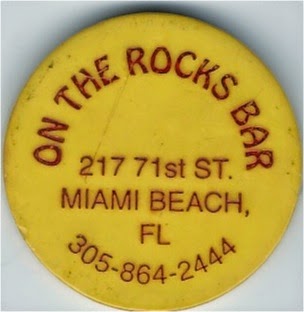Colin Gullberg’s book, Chopmarked Coins: A History; the silver
coins used in China 1600-1935, provides an overview of interesting
artifacts often seen but little understood in numismatics. In China, trust was low; the solution
was chopmarks. Specially trained
clerks, called shroffs, tested and counter-struck coins to validate them.
 |
| Chopmarks, Gullberg, page 87 |
Similar counter-stamps are
known on ancient Greek and Roman coins; we call them banker’s marks. Generally,
they are rare. In American history, they
are unknown, even as the same Spanish and Mexican coins supported trade
commerce here as in East Asia. In China, chopmarks were profuse.
Before he was chairman of the
Federal Reserve Board, Alan Greenspan wrote an essay on trust for Ayn Rand’s
anthology, Capitalism: the Unknown Ideal. “The Assault on Integrity” was a
response to those who claim that capitalism is a rapacious system serving
swindlers at the expense of the public.
In fact, said Greenspan, capitalism depends on trust. Writing in 1966, Greenspan reminded us
that millions of dollars of value in fiduciary instruments could be transferred
with a telephone call. Twenty-five
years later, speaking to a Republican Party dinner, Newt Gingrich made the same
point: you call an 800-number to make an airline reservation, give your credit
card information, and the next morning show up at the airport actually
expecting a ticket to be waiting.
Frontier America 1600-1935
and China of the same period shared much: the same global commerce carried by
the same forms of money; a rough-and-tumble laissez faire business environment;
benign neglect by the central authorities; even periodic booms and busts that
could have been linked to each other. Yet, we never chopmarked our coins.
 Bob Schreiner’s “Spanish Coins on American Notes” provides ample evidence that U.S. federal
coinage was a secondary medium.
Banks promised cents and dollars; but they showed reales as their guarantees. Until 1857, many foreign gold and silver coins were
recognized as legal tender. The U.S. Mint periodically published tables showing
exchange rates for the issues of Spain, the UK, France, the Netherlands,
Brazil, German states and Italian states.
Bob Schreiner’s “Spanish Coins on American Notes” provides ample evidence that U.S. federal
coinage was a secondary medium.
Banks promised cents and dollars; but they showed reales as their guarantees. Until 1857, many foreign gold and silver coins were
recognized as legal tender. The U.S. Mint periodically published tables showing
exchange rates for the issues of Spain, the UK, France, the Netherlands,
Brazil, German states and Italian states.
 Of all the US coins, the
Capped Bust Half dollar 1807-1836 was most commonly counterfeited. Varieties of counterfeit “busties” are
popular among some collectors who call them “bogos.” Fifty cents represented about a day’s wages for the average
industrial or crafts worker, about like $100 today. (The modern $100 bill is the most frequently counterfeited
both at home and abroad.) Through
the nineteenth century, we had privately struck “pioneer” gold coins from the
Bechtlers (1831-1850), to the California gold rush mints, to the Mormons, and
beyond. Yet, America never developed an institution similar to the shroffs.
Of all the US coins, the
Capped Bust Half dollar 1807-1836 was most commonly counterfeited. Varieties of counterfeit “busties” are
popular among some collectors who call them “bogos.” Fifty cents represented about a day’s wages for the average
industrial or crafts worker, about like $100 today. (The modern $100 bill is the most frequently counterfeited
both at home and abroad.) Through
the nineteenth century, we had privately struck “pioneer” gold coins from the
Bechtlers (1831-1850), to the California gold rush mints, to the Mormons, and
beyond. Yet, America never developed an institution similar to the shroffs.
Causes may be hard to find.
Max Weber’s The Protestant Ethic and the Spirit of
Capitalism opens with an extended quote from Benjamin Franklin’s Way to Wealth (1758). Franklin’s advice is to rely
on yourself: “But with our industry we must likewise be
steady, settled, and careful, and oversee our own affairs with our own eyes,
and not trust too much to others; . . . Trusting too much to others' care is
the ruin of many; for In the affairs of this world men are saved, not by
faith, but by the want of it”.
The religious basis for trust
may be only sublimated. We do have
social structures for establishing reputation. In numismatics, we have third-party grading. Electrical apparatuses come with the UL
from Underwriters Laboratories and other stamps of approval. Standard & Poor and Moody’s rate
fiduciary instruments. Our
memberships in social organizations also validate us.
Perhaps the most
curious fact about Chinese chopmarks is that they did not actually identify
anyone. According to Gullberg, only the British tea trading firm, Tait &
Co., used an identified mark, two characters giving its name. While the myriad others must have been
recognized in their times and places, no table was ever constructed, even though
Canton (Guangdong), Shanghai, Hong Kong, Taipei, and other centers all had
schools for training shroffs.
Chopmarked Coins: A History; the silver coins used in China 1600-1935
by Colin James Gullberg (iAsure Group JEAN Publications, June 2014,
187 pages, 8-1/2 x 11, color ill., $40 + S&H).
The book is for sale directly from the author.
Send an email to Colin Gullberg chopmarknews@gmail.com/
Also on Necessary Facts

















